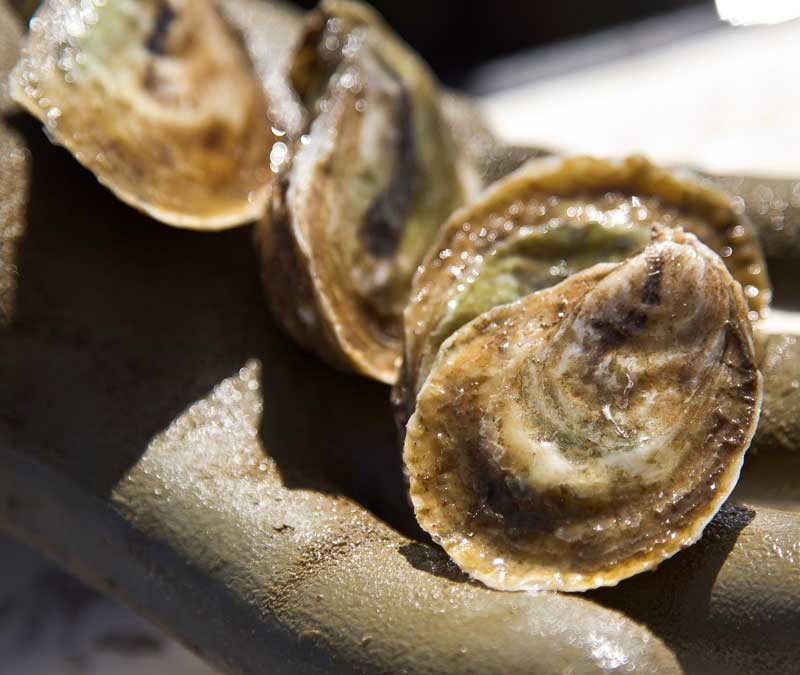As a food forager, one of the questions I get asked most frequently is, “what do you do during the winter months?”
It’s a valid question, as most people assume that the majority of the food sourcing I do involves produce. The truth is that as the growing season winds down in southern New England, I go on the hunt for all sorts of items I may have overlooked during the summer.
During this (normally) frigid time of the year, our attention turns to the farmers and food producers practicing animal farming, food preservation and dairy production. For farmers, the start of winter means winterizing the farm to keep their animals safe against potential storms and planning the crop rotation for the upcoming season.
Oyster farmers are a great example of this. They work year-round seeding, harvesting and growing their shellfish in the oceans and salt ponds all throughout New England. Although the majority of the oysters they grow are consumed in the summer months, any oyster farmer will tell you the best time of year to eat oysters is in the winter. Jeff Gardner of Watch Hill Oysters should know – he’s been at this a while. “Oysters are at their plumpest in the winter,” Jeff says. “Their body fat content is high, and they have more glycogen in their system in December and January than at any other part of the year.”
Glycogen is a type of sugar that’s used as energy storage in animals and fungi. In oysters it can be found in their liver and is said to give the shellfish its sweetness.
“Oysters are like bears,” Jeff continues. “Both animals build up a storage in preparation for the winter. Just as December ends and January begins, the oysters have started to hibernate but have not yet tapped into their glycogen supply, making them prime for eating!”
Dairy Farmers also produce harvest year-round. Think of the cream in your holiday eggnog!
The fresh cheeses and cream that we enjoy during the spring have flavors of fresh grass and newly sprouting herbs, whereas cheese produced in the winter months have the decadence of rich butterfat. Dairy cattle are fed hay and grains in the winter months and are often kept indoors. Their diet, rich in fat, coupled with minimal exercise translates into milk with a higher fat content and, therefore, a richer cheese. A great example of this is Jasper Hill’s Winnimere cheese. This cheese is only available during winter months and only made from the raw milk that cows produce while feeding on hay in the barn.
Young cheeses are wrapped in strips of spruce cambium, the tree’s flexible inner bark layer, harvested from Jasper Hill Farm’s woodlands. During aging, the cheese is washed in a basic salt brine to even out the rind development. After 60 days, the cheese is soft and tastes of bacon, sweet cream and spruce. You can order this cheese directly from Jasper Hill or stop by Fromage Fine Foods in Old Saybrook, Connecticut for a taste!
Winter foraging is certainly not limited to oysters and cheese! I encourage you to explore local winter farmers’ markets or stop by local farm stands where they’ve been pickling and canning for months now, and their freezes are surely full and waiting for your arrival!
